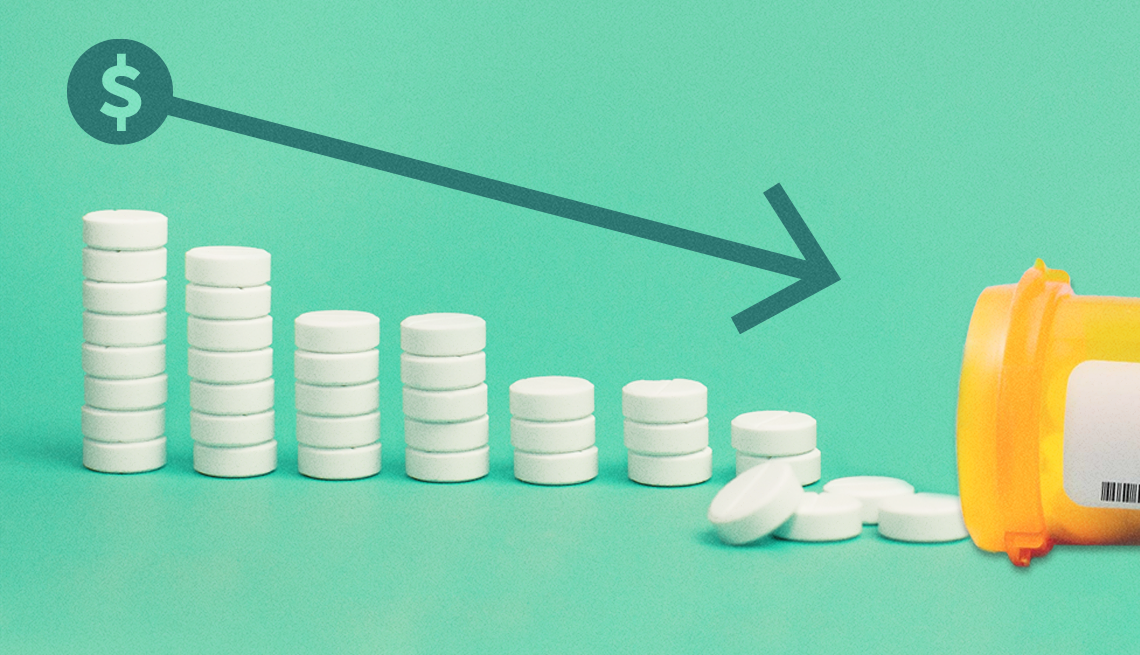AARP Hearing Center


Legislators at the state level are fighting high prescription drug prices with new laws that help make medications more affordable to their residents.
In 2023 alone, states throughout the U.S. passed nearly two dozen bills focused on the issue and supported by AARP: Some banned price gouging, while others cut copays and set upper payment limits on certain drugs. These wins add to hundreds of earlier efforts from states to bring down high prescription drug costs — and the work continues.
So far this year, AARP is monitoring more than 45 bills in 17 states, says Jonathan Bartholomew, a government affairs director at AARP, which for decades has advocated for prescription drug affordability. As the big drug manufacturers strive for greater and greater profits, Bartholomew says, “prescription drugs will continue to be a hot topic at the state level for the foreseeable future.” And AARP will “fight fiercely to help consumers afford the drugs they need,” he adds.
Here are six ways states helped make prescription drugs more affordable in 2023, plus a snapshot of progress being made so far this year.
1. Developed importation programs
In 2023, Texas became the seventh U.S. state to look to Canada as a source for cheaper drugs through its Wholesale Prescription Drug Importation Act, which directs the state’s Health and Human Services Commission to import certain prescription medications from Canadian wholesalers and suppliers.
“Drug prices in Canada are 30 percent, on average, cheaper than they are in the United States,” says Charles Cascio, senior associate state director of advocacy and outreach for AARP Texas. “So this is just one step closer to accessing cheaper medications for Texans.”
When the bill was introduced, “it was viewed as a really long shot,” Cascio says. But it quickly became a bipartisan effort, he says, and passed nearly unanimously. AARP shared up-to-date price research from AARP’s Public Policy Institute and testified at committee hearings.
Much work remains before the program gets up and running, but Texas is not alone in the endeavor, Cascio says. States started laying the groundwork for drug importation several years ago, and already Colorado, Florida, Maine, New Hampshire, New Mexico and Vermont have passed legislation. Other states are exploring the idea.
Florida is furthest along in the effort. In January, the U.S. Food and Drug Administration (FDA) OK’d the state to continue implementing its plan to seek certain prescription drugs from Canada. However, additional hoops remain. The FDA still must approve specific drug requests, and Florida must find willing suppliers in Canada before any actual importation begins.
The states’ plans differ, so each state will need its own FDA authorization, Bartholomew notes. “But there will be lessons learned so that other states can use what worked in Florida,” he says.
2. Established affordability boards
Two states, Minnesota and New Jersey, voted to establish prescription drug affordability boards (PDABs) in 2023, joining a handful of other states that had already done so. These independent groups — sometimes referred to as affordability councils — review the cost of prescription medications and make recommendations on how to lower prices for those deemed unaffordable, though the authority of each board differs from state to state.
The creation of Minnesota’s PDAB is one development in the state’s ongoing multipronged approach for making prescription drugs more affordable, says Mary Jo George, AARP Minnesota’s advocacy director. The new board has broad authority to review prescription drugs and set upper payment limits that restrict the amount certain payers in the state can pay for a given drug. “Drugs aren’t useful if you can’t afford them,” George says.



































































More From AARP
Medicare's $180B Spending Spurs Debate
The prices greatly exceeded the average cost for manufacturers to develop new drugs
Medicare Drug Prices Soar Beyond Inflation
Rising prices of popular Part D prescription medications are far outpacing inflationRecommended for You